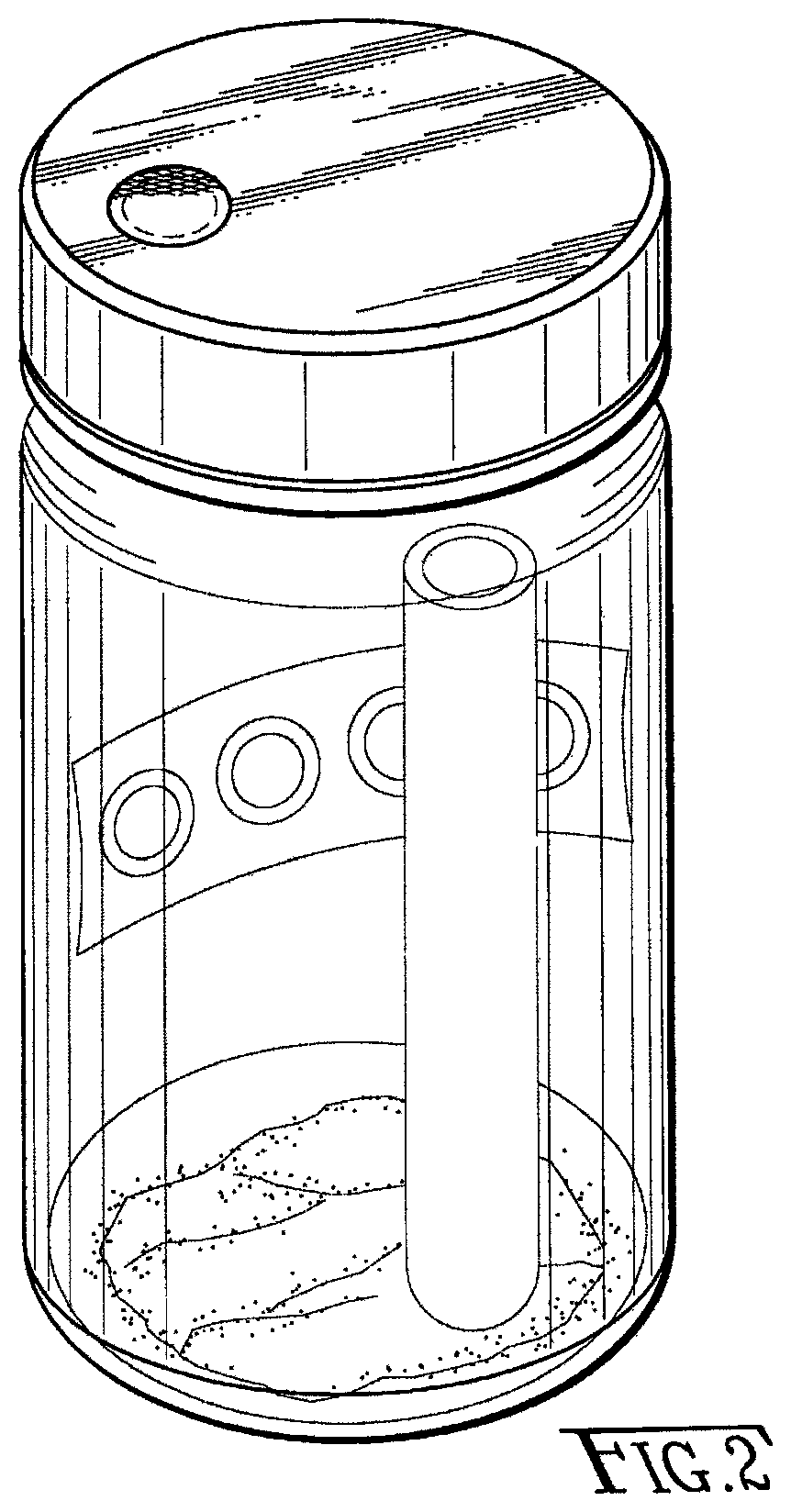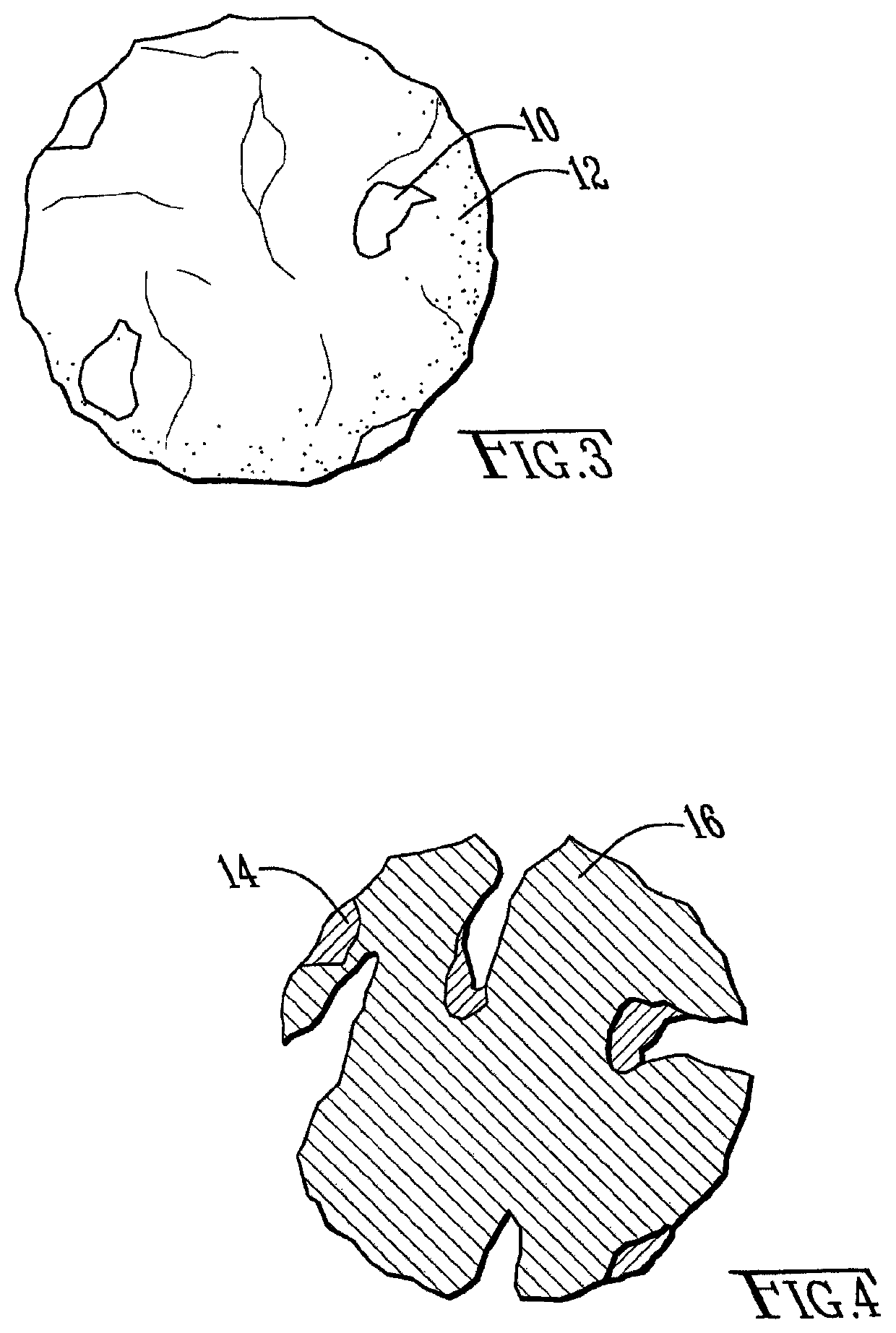Humidity and/or hydrogen control products, and production
a technology of hydrogen control and moisture, applied in the field of moisture and/or humidity control products, can solve the problems of consuming the meager capacity of moisture, the non-delivery of desiccants really never adjusts for the fresh gain or loss of water vapor in the environment, and the cost and complexity of humidity generators, etc., to achieve efficient consumption of salt solutions and a large surface area
- Summary
- Abstract
- Description
- Claims
- Application Information
AI Technical Summary
Benefits of technology
Problems solved by technology
Method used
Image
Examples
example 1
[0102]The control ‘environment’ comprises a sealed Mason jar with about ˜500 ml capacity (or about an imperial pint). The lid had with a ¼″ (˜0.6 cm) hole in the cap. This hole was sealed with a 2 mil PE film. The PE film was intended to allow hydrogen gas to escape by diffusion and at the same time reduce any exchange of water vapor from outside the jar. The gray granular solid in the bottom of the jar is a composite material that maintained the relative humidity in the jar for in excess of 60 days at approximately 9% relative humidity (at an average of 25° C.). Humidity was measured by a 3M® humidity indicator card.
[0103]About twenty (20) grams of the composite material was sprinkled into the bottom of the jar. The composite material consists of 90.09% cold welded micro-galvanic magnesium / iron couples, 7.58% lithium chloride, 0.45% potassium chloride, 0.08% modified starch and 1.80% water. The Mg / Fe couples contained 89.9 wt. % Mg and 10.1 wt. % Fe. The particles were sieved with ...
example 2
[0110]Example 2 was prepared to demonstrate the safe functioning of the claimed invention, even in the presence of liquid water. Micro-galvanic couple particles were prepared from Mg / Fe particles ball milled together to form conductively and fixedly connected particles. The Mg / Fe contained 89.9 wt. % Mg and 10.1 wt. % Fe. The particles were washed in water and vacuumed dry. They were then washed in methanol and dried again to remove all traces of water. The particles were sieved with a +60 mesh sieve, (0.25 mm). The particles were mixed with a cold methanol (with a small fraction of water) solution of NaCl and KCl and vacuum dried to form a 0.14 wt. % salt coating deposited on the surface of the micro-galvanic particles creating a solid phase particulate composite. Liquid water was introduced to the solid phase particulate composite resulting in a slow steady reaction, but no significant heat or steam was created. The liquid water reacted to form hydrogen gas and magnesium hydroxide...
PUM
 Login to View More
Login to View More Abstract
Description
Claims
Application Information
 Login to View More
Login to View More - R&D
- Intellectual Property
- Life Sciences
- Materials
- Tech Scout
- Unparalleled Data Quality
- Higher Quality Content
- 60% Fewer Hallucinations
Browse by: Latest US Patents, China's latest patents, Technical Efficacy Thesaurus, Application Domain, Technology Topic, Popular Technical Reports.
© 2025 PatSnap. All rights reserved.Legal|Privacy policy|Modern Slavery Act Transparency Statement|Sitemap|About US| Contact US: help@patsnap.com



